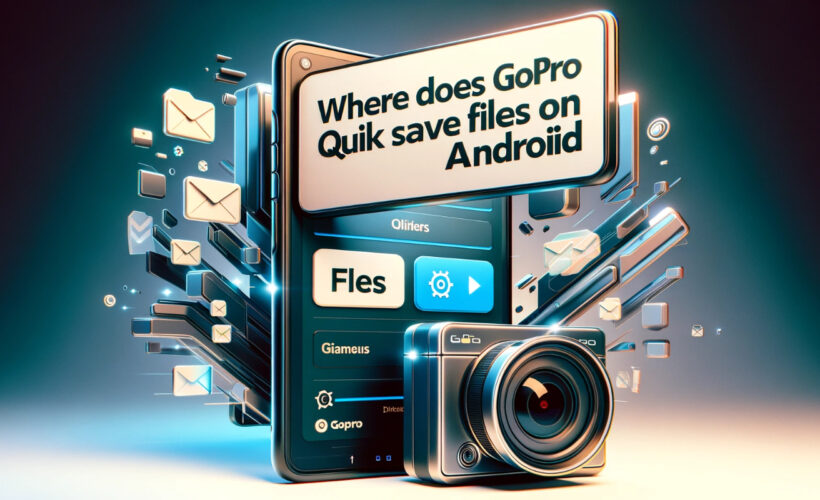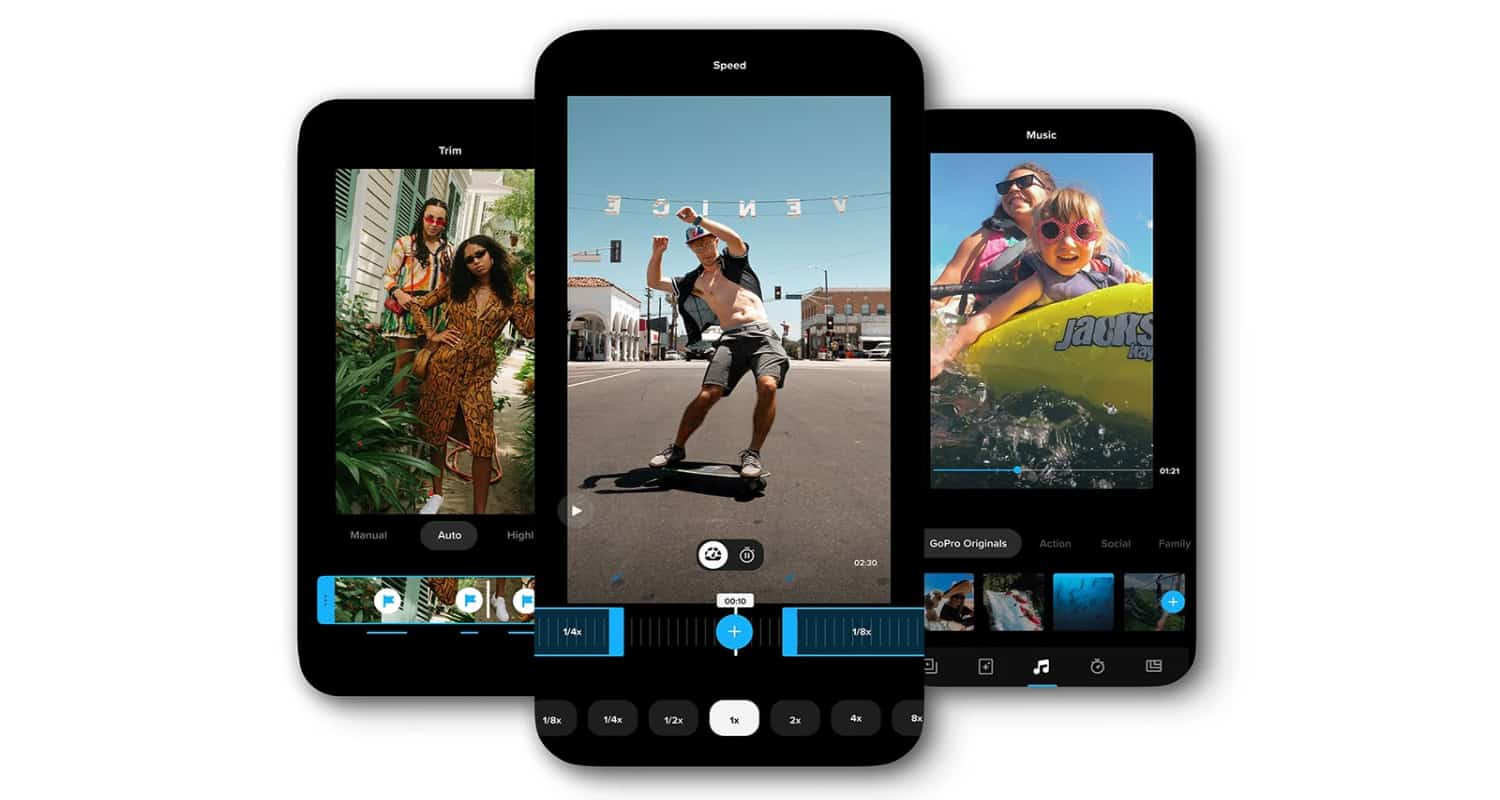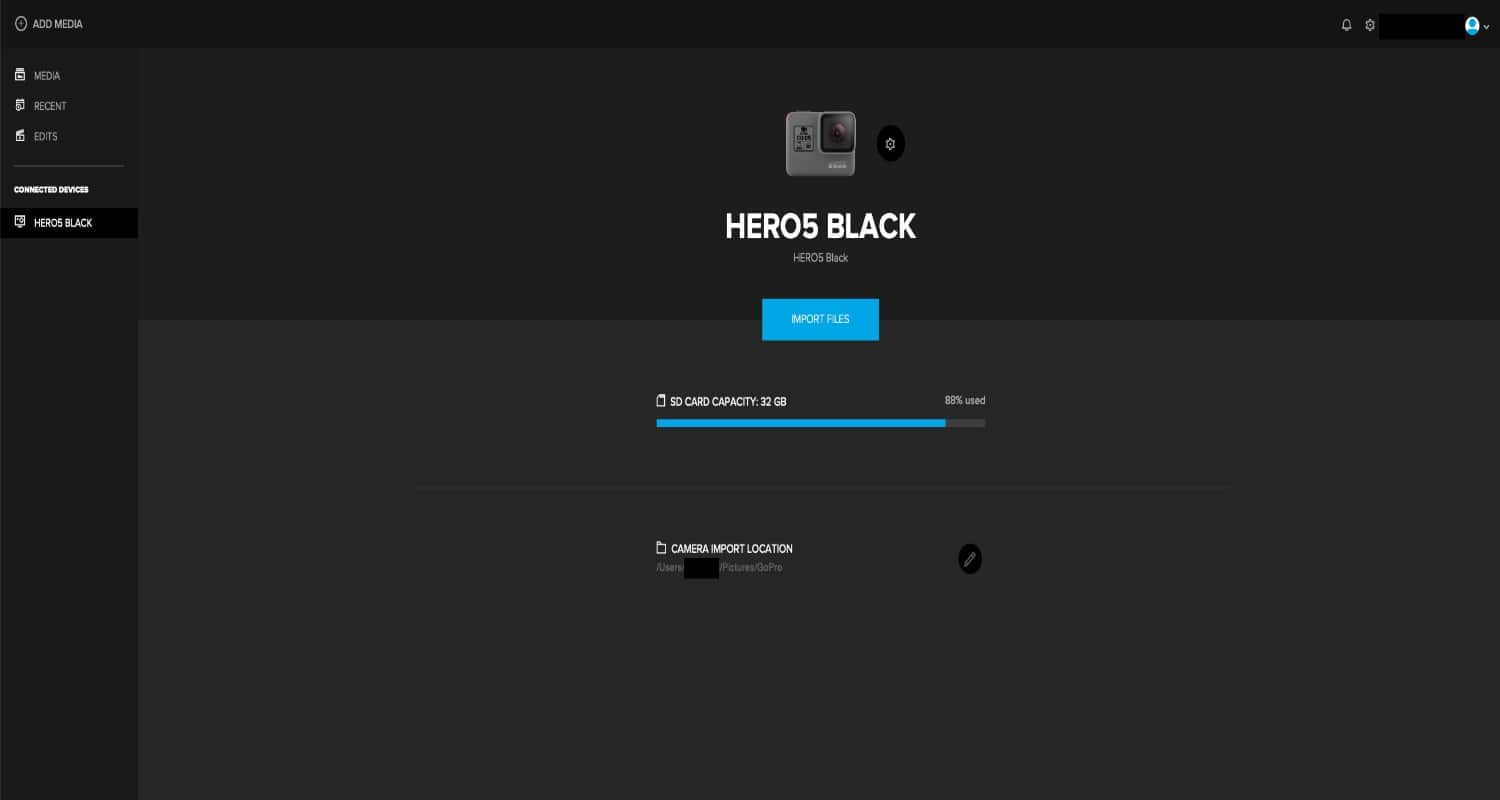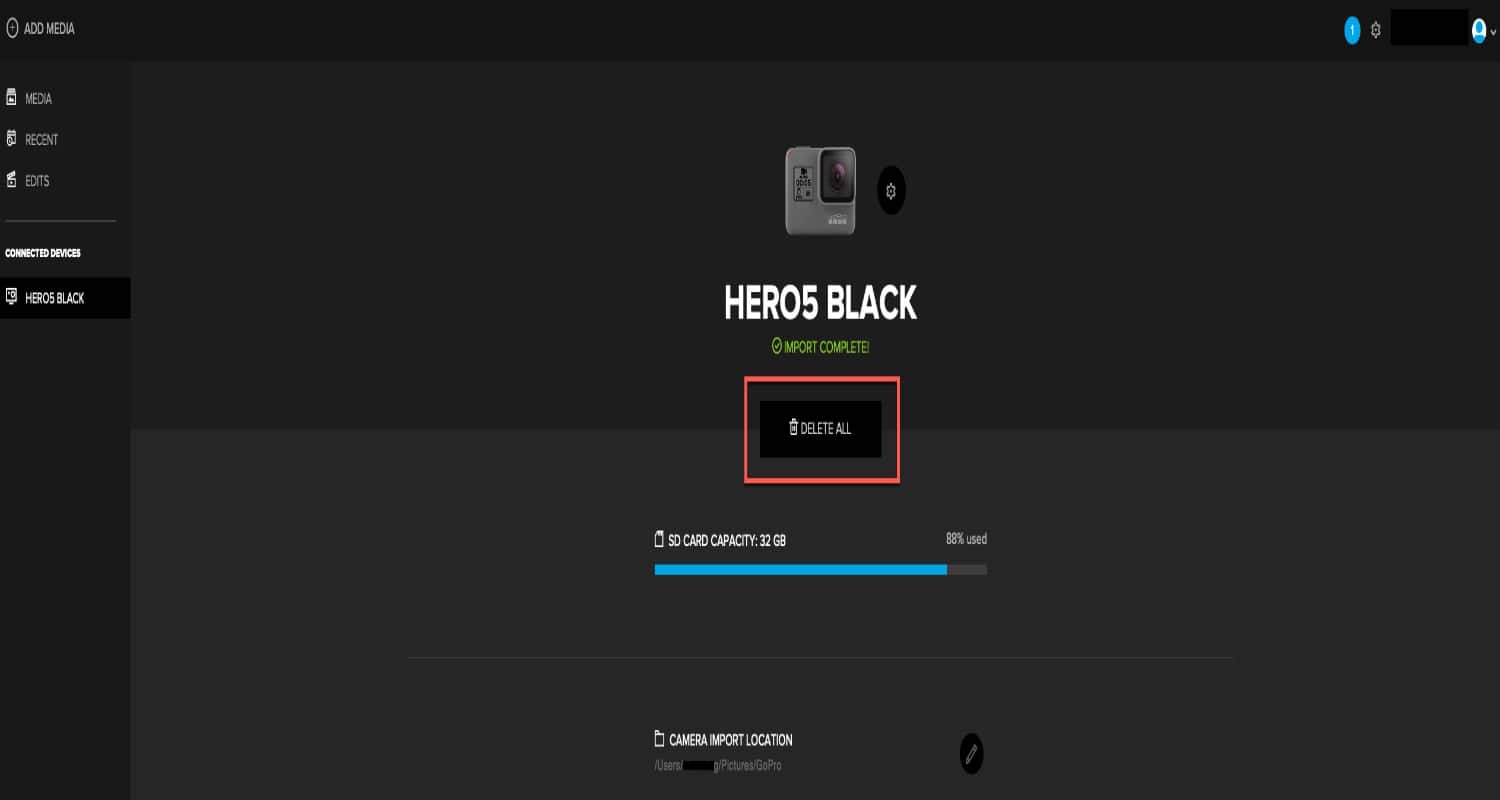
Have you ever captured that perfect shot with your GoPro, only to later scramble through your phone, desperately trying to find where GoPro Quik saved it? It’s a moment of panic many of us know too well. You’re not alone in this digital maze. The frustration mounts as precious moments tick away, and the fear of losing those irreplaceable memories looms large.
Where Does GoPro Quik Save Files on Android? GoPro Quik saves files in a dedicated folder within the phone’s internal storage, not directly accessible through the gallery or standard file browsers.
But fear not! We’re here to navigate you through the intricacies of GoPro Quik on Android, ensuring your treasured memories are always just a few taps away.
See Also: What is SKMS Agent Service App on Android?
Understanding GoPro Quik for Android
GoPro Quik for Android isn’t just an app; it’s your creative companion, transforming your adrenaline-packed moments into shareable memories. At its core, GoPro Quik is about ease and efficiency. It allows you to import your GoPro footage, edit it with a few taps, and share it with the world. But it’s more than just an editing tool. It’s a vault for your adventures, offering features like automatic video creation, easy-to-use editing tools, and a platform to organize your media. For those seeking similar organizational tools for their devices, exploring handwriting apps for Android can offer additional creative ways to manage digital content.
But here’s the kicker: Knowing where GoPro Quik tucks away your files on your Android device is crucial. Why? Because it’s not just about editing and sharing. It’s about control and peace of mind. Imagine this: You’re on a trip, capturing every leap and dive, but when you need to free up space or transfer files to another device, you hit a wall. Where are these files? Are they eating up your phone’s memory?
Understanding the storage intricacies of GoPro Quik is like having a map in a treasure hunt. It empowers you to manage your content effectively, ensuring that your phone’s storage doesn’t become a labyrinth of lost footage. So, let’s dive in and unravel the mystery of file storage in GoPro Quik, turning you into a savvy user who knows exactly where every pixel of their adventure is stored.
Default Storage Location for GoPro Quik Files
Internal Storage: The Primary Vault
When it comes to storing your epic GoPro footage, Quik plays it close to the chest – literally. The app typically saves your files directly in the phone’s internal storage. This choice is far from random; it’s about speed and stability. Internal storage is faster and more reliable, ensuring that your edits and saves are as quick as your adventures.
Navigating the Hidden Path
But here’s the twist: these files aren’t lounging in your gallery or waving at you from a standard file browser. They’re tucked away in a dedicated GoPro folder, somewhat hidden from plain sight. This might sound like a digital game of hide-and-seek, but there’s logic to this secrecy. To prevent accidental deletions and keep your media organized within the app’s ecosystem, it’s essential to understand the file system of your device, similar to how you would when installing a keylogger remotely on an Android phone.
External Storage: A Secondary Option
While GoPro Quik primarily favors internal storage, it doesn’t mean external options like SD cards are out of the picture. You can export and transfer your files to external storage, but this is more of a manual step, a secondary move after the app has first saved everything internally.
Understanding this storage dynamic is key. It ensures that you’re never in the dark about where your thrilling GoPro moments are stored, ready for the next edit or share.
Accessing Saved Files in GoPro Quik
Step-by-Step Guide to Unearth Your GoPro Treasures
- Open the GoPro Quik App: Start your quest by launching the GoPro Quik app on your Android device. This is your gateway to all things GoPro.
- Head to the Media Section: Tap on the ‘Media’ tab at the bottom. Here, you’ll find all your GoPro footage that’s been imported into the app.
- Locate Your File: Browse through the thumbnails. Each represents a piece of your adventure, waiting to be revisited.
- Select and View Details: Once you find the file you’re looking for, tap on it. Look for an ‘info’ icon or similar option to view details. This should reveal the file’s location on your device.
Navigating the Android File System Like a Pro
- Use a File Manager App: Android’s file system can be a labyrinth. Equip yourself with a file manager app. It’s like having a digital compass, guiding you to your files. For more advanced Android users, understanding and using the Samsung Android dialer can provide additional control over your device’s functionalities.
- Search for the GoPro Folder: In your file manager app, navigate to the internal storage. Look for a folder named ‘GoPro’ or similar. This is where your files are initially stored.
- Check for Hidden Folders: Sometimes, folders or files might be set to ‘hidden’. Ensure your file manager settings allow you to view these hidden treasures.
- Remember the Path: Once you find the GoPro folder, make a mental note of the path. It’ll save you time on your next file-hunting adventure.
By following these steps and tips, you’ll be a master at locating and accessing your GoPro files, ensuring that no memory gets left behind in the digital depths of your Android device.
Managing Storage Space on GoPro Quik
Freeing Up Space: A Necessary Ritual
- Regularly Export and Delete: After editing and exporting your GoPro masterpieces to your phone’s gallery or cloud storage, it’s wise to delete them from the Quik app. This keeps the app’s storage lean and mean, ready for new adventures.
- Clear Cache Wisely: GoPro Quik accumulates cache over time. Clearing it from the app settings can free up space, but tread carefully – you don’t want to lose any unsaved edits.
Best Practices for File Management
- Organize As You Go: Don’t let your GoPro files turn into digital clutter. Regularly organize and label your files within the app. It makes future searches faster and your editing process smoother.
- Use Cloud Storage: Integrating cloud storage into your workflow is like having an endless digital backpack for your files. It’s a secure way to store your footage and frees up space on both the app and your device.
- Keep an Eye on Storage Space: Make it a habit to check the app’s storage usage. Android settings usually provide a breakdown of how much space each app is using.
- Backup Before Major Edits: Before you dive into editing, especially if you’re working on a large project, back up your raw files. This ensures that even if you need to clear space mid-edit, your original footage is safe.
- Stay Updated: Keep your GoPro Quik app updated. Updates often come with improved storage management features and bug fixes that can help optimize space usage.
By mastering these storage management techniques, you ensure that GoPro Quik remains an efficient tool in your content creation arsenal, always ready to store your next big adventure without running into the dreaded ‘Storage Full’ notification.
Exporting and Backing Up Your GoPro Files
A Step-by-Step Guide to Exporting Files
- Choose Your File: In the GoPro Quik app, select the video or photo you want to export.
- Export Options: Tap on the ‘Share’ or ‘Export’ icon. This will open a range of options – from saving to your device’s gallery to sharing on social platforms.
- Save to Gallery: To save to your phone’s gallery, choose the ‘Save to phone’ or similar option. Your file will be exported to a gallery folder, typically labeled ‘GoPro Exports’ or similar.
- Cloud Storage Export: For cloud storage, select your preferred service (like Google Drive or Dropbox) from the share options. You might need to sign in to your cloud account if it’s your first time.
The Imperative of Backing Up
- Safeguarding Memories: Your GoPro captures more than just videos and photos; it captures memories. Backing up these files means protecting these irreplaceable moments from accidental loss or device failures.
- Multiple Backup Options: Utilize various backup options. Alongside cloud storage, consider external hard drives or SSDs for physical backups. This dual approach (digital and physical) adds an extra layer of security.
- Regular Backup Schedule: Make backing up a regular part of your routine. After each significant use of your GoPro, take the time to back up new content. This habit ensures that your latest adventures are always secured.
- Ease of Access and Sharing: Backed-up files are easier to access and share. Whether you’re editing on a different device or sharing memories with friends, having your files backed up means they’re always within reach.
By diligently exporting and backing up your GoPro files, you ensure that your adventures are preserved, accessible, and safe, allowing you to relive and share your experiences without the fear of losing them to the digital void.
Troubleshooting Common Issues
Navigating Common Storage Hiccups
- Invisible Files: If you can’t see your files in the gallery after exporting, check if the app has the necessary permissions to access storage. Sometimes, a simple restart of the app or device can also refresh the file system and make the files appear. In similar scenarios, if you’re facing issues with other apps, such as not enough memory to open this page, similar troubleshooting steps can be applied.
- Storage Full Error: Encountering a ‘Storage Full’ error despite having space? Clear the cache and check for any residual files in the GoPro folder using a file manager. Sometimes, the app might not properly delete files, leading to hidden space consumption.
- Corrupted Files: If you find a file is corrupted, try re-exporting it. Ensure your app is updated, as older versions might have bugs that affect file integrity.
- Slow Export Times: Slow exports can be frustrating. Ensure your device isn’t running too many apps in the background, and consider freeing up RAM and storage space for smoother operation.
FAQs
How do I transfer files from GoPro to my Android phone?
Connect your GoPro to your phone wirelessly, use the Quik app to view your GoPro's SD card content, and select the download option to transfer files to your phone.
Can I save GoPro files directly to my phone's SD card?
No, the GoPro app uses the phone’s internal storage for initial file saving. You can manually move files to an SD card afterward for space management.
Why can't I see my GoPro files in the phone's gallery?
Ensure the GoPro Quik app has the necessary permissions to access your phone's storage. Sometimes, restarting the app or device can help the files appear in the gallery.
What should I do if my GoPro Quik app shows a 'Storage Full' error?
Clear the app's cache and check for residual files in the GoPro folder using a file manager. Ensure your device has enough storage space.
How can I back up my GoPro files?
Regularly export your GoPro files to cloud storage or an external hard drive. This ensures your files are safe and accessible for future use.
Conclusion
In the world of GoPro Quik on Android, knowledge is power. Understanding where and how your files are stored, and mastering the art of exporting and backing up, transforms you from a mere user to a savvy GoPro enthusiast. Remember, every problem has a solution, and with these tips, you’re well-equipped to tackle common storage issues head-on.
So, dive back into GoPro Quik with confidence. Explore its features, experiment with your footage, and keep creating those stunning visual stories. With your newfound knowledge and skills, the world of GoPro Quik is your oyster – ready to be explored and enjoyed to its fullest!

Jordan is the Phones Editor for WantedTech, covering all things phone-related. He’s written about phones for over five years and plans to continue for a long while to come. He loves nothing more than relaxing in his home with a book, game, or his latest personal writing project. Jordan likes finding new things to dive into, from books and games to new mechanical keyboard switches and fun keycap sets. Jordan tends to lurk on social media, but you can best reach him on Twitter.






